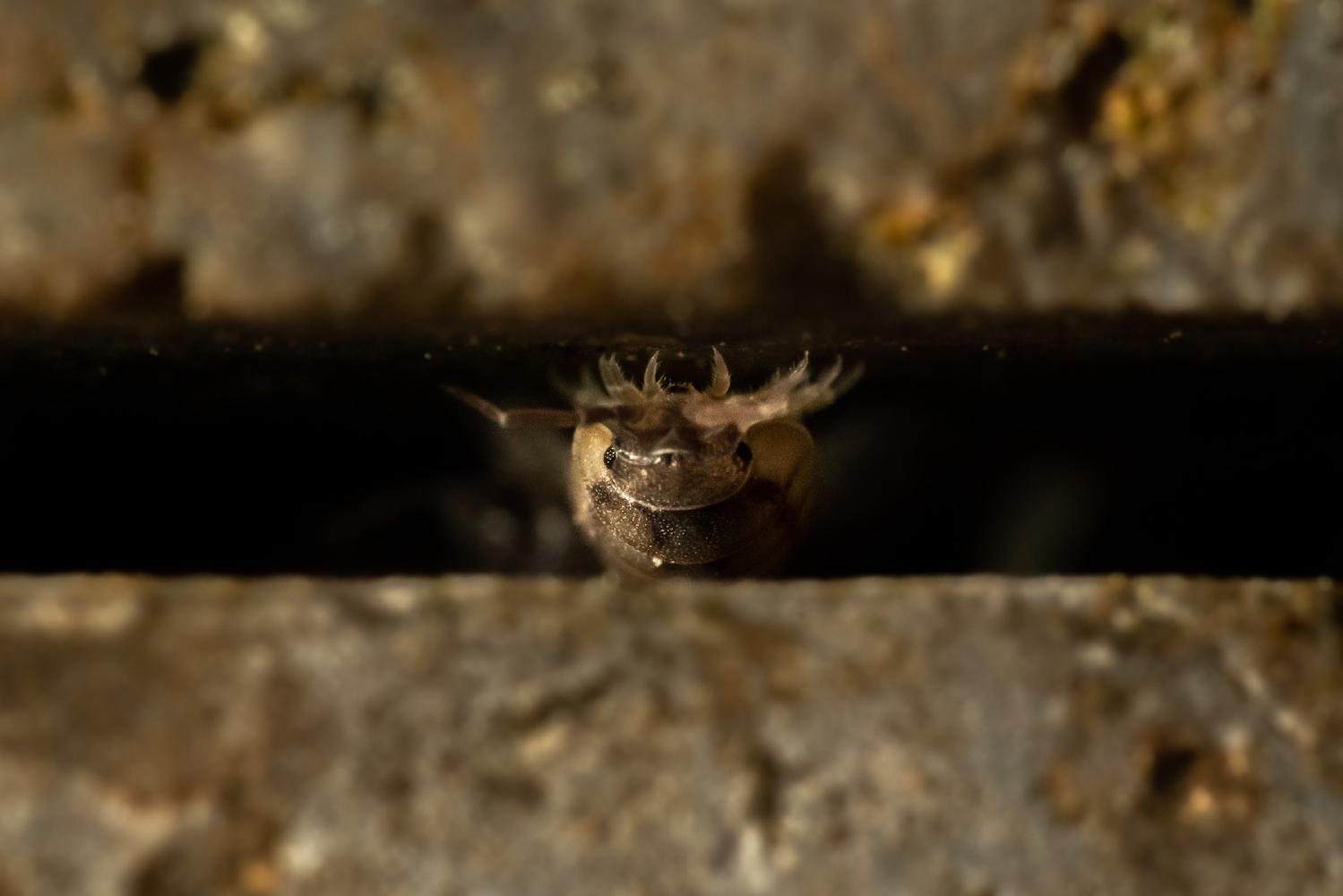Common Rough Woodlouse
Lat. “Porcellio scaber“
species
of suborder
“Woodlice, Pillbugs, and Rock Slaters“
1 species
The summary discusses Porcellio scaber, a species of woodlouse found in Central and Western Europe, the United Kingdom, North America, South Africa, and Australia. It describes the taxonomy, distribution, physical characteristics, habitat, feeding habits, life cycle, and behavior of the species. The woodlouse exhibits specific behaviors to avoid desiccation and predators and has been the inspiration for an algorithm called the Porcellio scaber algorithm (PSA) used for solving optimization problems.
Taxonomy
One subspecies, Porcellio scaber lusitanus, is currently recognized. Two other subspecies were historically deemed valid but are no longer recognized. P. s. americanus, described in 1932, was considered endemic the Americas. P. s. japonicus was described in 1928 and believed to be endemic to Japan. Both subspecies were synonymized with the nominate in 2020.
Distribution
Porcellio scaber is found across Central and Western Europe. In the United Kingdom, it is one of the “big five” species of woodlice. It has also colonised North America, South Africa and other regions including the remote sub-Antarctic Marion island, largely through human activity. It is also the most common species of woodlice found in Australia.
Description
Porcellio scaber has an oval body, can grow up to 20 millimetres (0.79 in) long, and is usually a grey colour, paler underneath, although, brown, blue, yellow, orange, or pinkish hues may also be observed. The dorsal (upper) surface of its segmented exoskeleton is covered in a series of small tubercles hence its common name. At the head it has two pairs of antennae, with the inner pair being very small. Two compound eyes are located on the dorsal side of the head, while the mouthparts are on the ventral (lower) side. There are 7 pairs of legs, corresponding to the 7 segments of the thorax. The short abdomen consists of 6 segments. On the ventral side of the abdomen there are two whitish pseudo-lungs, connected with pores to the outside air. At the rear end there is a small telson flanked by a pair of appendages known as uropods.
Habitat
Porcellio scaber loses water by diffusion through its permeable exoskeleton which lacks a waxy cuticle. Because of this, to avoid desiccation, it often seeks out environments with humid air and plenty of ground moisture, preferably cold to minimize rate of water loss, and dark to avoid detection by predators. It lives in a wide variety of damp habitats but it is less dependent on high levels of humidity than Oniscus asellus.
Feeding
Porcellio scaber is a detritivore – it mainly feeds on decaying leaf litter but will consume any rotting plant matter. Living plants are of limited nutritional value for these woodlice which prefer to feed on the bacteria and fungi which cause decay. P. scaber has very sensitive olfactory receptors that allow it detect the smell of microbial activity and to locate food.
Life cycle
The females carry about 25 to 90 fertilized eggs until they hatch and are held in a fluid-filled sac at the ventral side of the abdomen for about 40–50 days. The young are reproductively mature after 3 months; the adult animals have a life expectancy of about two years.
Behaviour
Porcellio scaber respond to certain stimuli with kinesis behaviour. To attempt to find an environment where they lose less moisture and then stay there, P. scaber alter factors such as speed and rate of turning (orthokinesis and klinokinesis). When in a dry or hot environment, these woodlice have been observed increasing speed and turn more often in an attempt to leave the unfavorable environment. In a moist, dark, cool environment, they slow down dramatically and often stop altogether. To avoid desiccation, most woodlice (including P. scaber) exhibit thigmokinesis, slowing down or stopping when in contact with multiple surfaces (such as the corner of a box or a crack between two bricks). This behaviour leads to clumping of woodlice, reducing the exposed surface area through which water can be lost. Another manifestation of this is that a woodlouse in a Petri dish is unwilling to move into the center of the dish, preferring to stay near the edge. Another reflex exhibited by P. scaber is turn alternation. During klinokinesis, turns alternate between left and right. This helps the woodlouse escape from a harmful environment or predator more efficiently as alternating turns average to form a straight line, unlike random turns which may well become a circle back to the predator. Several mechanisms for this have been proposed, such as short-term memory or following the outside wall, but the theory with most support is the bilateral asymmetrical leg movement (BALM) mechanism, which suggests that on the original turn, the legs on the outside of the turn become relatively more tired, so end up being overpowered by the legs on the inside of the turn, causing it to turn the opposite way from last time.Unlike the ‘roller’ species of woodlouse, such as Armadillidium spp., which are able to curl into a ball to defend themselves, P. scaber is a ‘clinger’ and adopts a posture of tonic immobility when faced with the threat of predation. A study of this thanatosis behaviour found that individuals of this species had unique personalities with shy woodlice staying still for longer and bold woodlice staying immobile for less time.
Algorithm
Inspired by the behaviours of P. scaber, an algorithm for solving constrained optimization problems was proposed, called the Porcellio scaber algorithm (PSA).
See also
List of woodlice of the British Isles
External links
Media related to Porcellio scaber at Wikimedia Commons Data related to Porcellio scaber at Wikispecies
Ancestry Graph
Further Information
Copyright

This article uses material from the Wikipedia article Porcellio scaber the free encyclopedia Wikipedia which is released under Creative Commons Attribution-ShareAlike 4.0 International License). On Wikipedia a list of authors is available.
